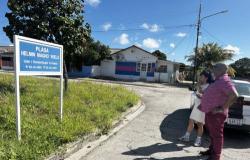“I was trained as a general practitioner in England. There was a completely different practice there than in the Netherlands. Much more attention to palliative care. Euthanasia was not an option. In 2002, legislation was passed in the Netherlands. Once I became a general practitioner, I specialized enormously in palliative care. Not because I am against euthanasia in principle, not at all. But we miss something if we don’t pay attention to this. No attention for the whole patient.”
“The GP must be an easily accessible place with attention for the whole person. Nowadays, GP practices are almost becoming small hospitals, where many small procedures take place. I do not want that. That is not what the GP should be. Do you see those boxes on the treatment table? I haven’t used that table in a week.”
“So I have always been concerned with the palliative side of the profession. You can mean so much to someone in that final phase. But indeed, that takes a lot of time and attention. An insurance company gave me a numerical overview of everything we do here in practice. And yes, some things take more time and attention. But you do get something in return. Only the insurance accountants don’t see that. What percentage of your patients die at home? How often does it happen that emergency admission is necessary, for example for older people with dementia? Those are also numbers you can look at. However, that concern lies with a different arm of the insurance company. So they don’t see it. I think what I do is much cheaper in the end. But no one wants to watch that.”
Coffee euthanasia
“I have been working on palliative care for a long time. I write about it and participate in the discussions. And undoubtedly people, colleagues, find me difficult. In 2016 the so-called coffee euthanasia took place. Euthanasia was granted to a severely demented lady who had been admitted to a nursing home. She had drawn up a very clear advance directive. But when the moment came, she was no longer able to coherently express her will. To make the euthanasia possible, she was given a narcotic in a cup of coffee beforehand. While she was calmed down, the IV could be put in and she died. This case was new in two respects. Could you rely on an old advance directive without it being confirmed and could you sedate someone in advance so that that person would not resist? Intuitively, I found both positions difficult. Although the Supreme Court ultimately approved this and the doctor was released from prosecution. Legally it is correct, but is it also okay?”
“On my initiative, we placed an advertisement in national newspapers with more than 450 doctors with the text: our moral reluctance to end the life of a defenseless human being is too great. They contributed one hundred euros per person. So they were very motivated for this call. You understand that this did not make me popular with all colleagues.”
“When this was happening, I was also involved with a group of students from the university here, sort of honors class. That inspired me to investigate the matter more deeply. How are GPs doing? I investigated it quantitatively and qualitatively and I also wanted to know how it could be improved. The thesis is a reflection on some things. I presented a case, similar to that of the coffee euthanasia. Many doctors, about 43 percent, felt that an advance directive was not enough, but 18 percent did. The use of sedative medication was considered justified by 46 percent, while 32 percent said no and 22 percent did not know yet.”
“The numerical research therefore reveals a divided picture. But the qualitative part mainly reflects the wish that doctors should be given more support. Doctors are uncertain about these ethical and legal issues. These types of decisions must be made in a much broader circle than just doctors. It is especially important that an entire team empathizes with a patient’s personal background and continues to look for alternatives. We can remove many discomforts or suffering with current insights into psychosocial interventions, medication or sedation. Perhaps ethicists and spiritual counselors can play a role in that extensive team. Doctors feel insecure and need more guidance in this regard.”
Jaap Schuurmans
Image by:
Allard Willemse
“What I encounter in practice is the way in which the advance directive regarding euthanasia is viewed. In the current interpretation of the Supreme Court, this has been given almost absolute value if the expression of the death wish is no longer possible. But do you want to kill someone who no longer knows how to do it? How much does someone who no longer knows his family suffer or is that actually the suffering of the family? Is that a reason to kill someone? I also notice this with normal deaths. How often do I get the question: can’t he or she get some more morphine? Even if I show by means of a painful stimulus that the patient no longer feels anything. The family is sometimes downright angry with me.”
“People should not assume that an advance directive is automatically executed. It is a declaration of wishes, but the world could have become very different at a later date. What do you expect from the doctor or from a family member who has to decide for you that it is now over? A sensible GP will discuss this in advance when someone presents such a statement. But hey, you barely have time for that. And people are sometimes very persistent or prescriptive in what they want. The danger is that you simply put the statement in your file and then create expectations that you actually cannot or do not want to fulfill.”
“People have an overly romantic, unrealistic view of death. You have seen this again in recent weeks with the duo euthanasia of Dries and Eugènie van Agt. The image of love unto death. But what you miss in that picture is the reality that it must have been a hopeless suffering for both of them in advance. That dying is something you always do alone, even if you hold hands. I am reminded of the image of the brothers Edward and Frans Van Raemdonck from Temse who died close to each other in a bomb crater during the First World War and were found that way. Almost immediately it was framed as brothers who held each other until death. You can describe it very nicely, but you really don’t know what happened. There are also sources that tell it differently. Death is never beautiful. What is a dignified death? Maybe it doesn’t exist. All you can do is assist someone with care and love. That is what I am committed to.”
Who is Jaap Schuurmans?
Jaap Schuurmans (1961) studied medicine in Groningen and graduated in 1989. He took his general practitioner exam in England in 1994. He specialized in palliative care, but also took all kinds of courses in the field of existential psychotherapy, philosophy and ethics. He received his PhD for his thesis in Nijmegen on September 11, 2023 Euthanasia Requests from Patients with Dementia. Exploring GPs’ attitudes, experiences, barriers and needs. He is also a visual artist. Images of his work play a major role in the dissertation.
This article comes from Remonstrant magazine AdRem, March 2024, a special issue about euthanasia.
Download this special edition for free now.







